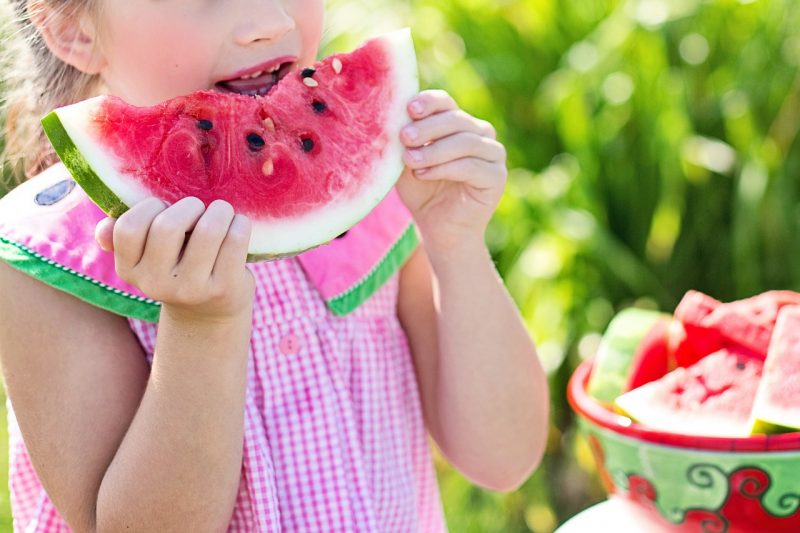Try our new free GreenChoice - Food Scanner mobile app!
DOWNLOAD-
-
-
Diets
Allergies
Take our 30-second quiz & we’ll filter our site to show only products that match your dietary preferences.
- GCNow
- The History of Watermelon: America’s Favorite Fruit
The History of Watermelon: America’s Favorite Fruit
Author: Marissa LazaroffPublished: August 6, 2018

Smooth green skin, red juicy flesh, and an overlooked secret. This is the story of Citrullus lanatus — also known as the watermelon.
The story of the watermelon dates back almost 5,000 years. Theories exist about the watermelon’s humble beginnings but with the earliest evidence of a modern watermelon surfacing 4,000 years ago in Ancient Egypt, all that can be agreed upon is that these magnificent fruits evolved in Africa.
Their history can be traced around the world, serving as a source of water on long voyages, a health remedy, and a religious icon. Although found primarily in Northern Africa and around the Mediterranean Sea around the beginnings of Christianity, watermelons have since spread to every corner of the Earth.
When first cultivated all those years ago, these tasty melons were not so tasty, and were used only as a source of water. Through hundreds, if not thousands of years of selection by humans for their sugars, watermelons went from having a white inside flesh, to the yummy red flesh we know and love today.
While today’s watermelons no longer have to deal with the trials and tribulations of domestication, they still have their own challenges to overcome.

First and foremost, watermelons are quite needy by their very nature. Particular to specific climates and growing practices, it can be difficult to grow watermelons.
Although the fruit is over 90% water and appears straightforward in manner, these fruits require a lot of attention and care. Watermelons grow on long vines with a number of fruits. For best chance of survival, these vines should be grown in warm, moist climates and in sandy soils.
Each individual fruit consumes 1-2 inches of water per week. It is suggested to keep the soil moist but not soaked because these waterlogged fruits will easily become moldy or rot if exposed to too much water.
Second, there are a number of questions regarding the production of melons. In 2018 alone, Americans have bought over 3 billion pounds of watermelon. With such high demand, it is impossible to grow enough watermelons within the United States.
Melons are predominantly grown in Texas, Florida, California and Georgia, while imports come from countries in Central and South America. Importing drastically increases the carbon footprint of the fruit, as these fruits must be transported thousands of miles before they arrive in the US. Varieties of watermelons are also often subjected to genetic modification, so that they become seedless or even various unnatural shapes and sizes.
Lastly, although it is called a melon, the watermelon is not even a part of the melon family. Melons can be traced back to Asia, while the watermelon has ties to the gourds of Africa. The watermelon is in the ecological family Cucurbitaceae, the same as cucumbers, pumpkins, and squash. Even with this classification, we still consider these fruits as melons: quite the identity crisis.

garden-plants-174898/
For almost 5,000 years, as a lifesaving source of freshwater, or as a medicine, these magnificent fruits have evolved side by side humans. As they have witnessed the trials and tribulations of human history, we too have witnessed theirs.
While the initial shock of this not-an-actual-melon’s juicy past will take time to digest, it is time to sink your teeth into a slice of US-Grown watermelon and taste this remarkable evolutionary history with every bite.
***
GreenChoice, PBC has evaluated and rated more than 340,000 food & beverage products across hundreds of attributes related to diet, health, and sustainability. Easily find the best products for you, the planet, & your budget. Download the free GreenChoice app for Apple iOS or Android!